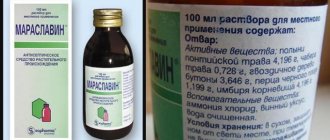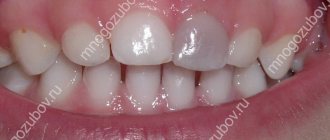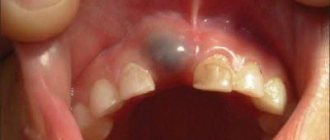Types of flux
This pathology is characterized by several stages of its clinical development. At the first stage, minor pain appears. The second stage is characterized by swelling and redness of the gums in the area of infection.
During the third stage, pus appears, the temperature rises, and the cheek and gum area swell noticeably. At the fourth stage, a person feels a sharp throbbing pain, swelling intensifies, and an extensive inflammatory process may begin. The following types of flux exist:
- Ordinary.
The pathological process occurs without infiltration of the periosteum by pus;
- Fibrous.
With this type of periostitis, inflammation spreads to the periosteum tissue;
- Orthodogenic periostitis.
The disease manifests itself in the form of osteomyelitis, which is a serious complication requiring surgical tooth extraction;
- Albuminous flux.
Chronic pathology, which is characterized by a sluggish course, subfertile temperature and suppuration.
Only a dentist can determine the type of disease and prescribe proper treatment, but before visiting, it is necessary to stop the process.
Why is periostitis dangerous and how to avoid it?
The causes of the disease do not appear overnight, but accumulate in the body over several months or years. Therefore, it is very simple to resist the appearance of tooth flux in an adult:
- Get a routine dental checkup every 6 months. This way you can identify pathologies and anomalies of the oral cavity in the bud and, using simple procedures, prevent their transformation into gumboil.
- Use professional oral hygiene services once every six months. Tartar and hard plaque cannot be removed at home, but they become the cause of many oral diseases.
- Consume more vegetables and fruits. They supply the body with useful substances, and also perform mechanical cleaning of the teeth and interdental spaces during the chewing process.
Possible complications of periostitis in the absence of treatment: sepsis, meningitis, abscess, phlegmon, osteomyelitis and others, up to and including admission to the department of maxillofacial surgery.
Any disease, including gum gum disease, is easier to prevent than to treat. If the inflammatory process has begun, do not rely on traditional methods and self-treatment. The purulent formation will not disappear on its own; only high-quality medical intervention will help eliminate the inflammation and avoid serious consequences.
Rinse with flux
Rinse solutions have a regenerating and anti-inflammatory effect on the pathological focus. You can use a soda solution, which reduces pain and inflammation. Rinsing should be done every two hours. Two teaspoons of soda are dissolved in 200 ml of warm water and used throughout the day.
Manganese solution has good therapeutic efficacy. It will reduce swelling by eliminating pathogenic microorganisms. You can use the drug Rotokan, which includes chamomile, yarrow and calendula. To prepare the solution, just add one spoon of Rotokan to warm water. You should rinse your mouth at least 4-5 times a day.
Antiseptics such as Chlorhexedine and Miramistin are also used. They do not need to be dissolved in water. It is enough to irrigate the affected cavity in order to reduce swelling, pain and inflammation. Rinse products similar in their therapeutic effects to Miramistin and Chlorhexidine also include Furacilin, which is sold in tablets. A couple of tablets are enough to prepare 200 ml of solution for treating the oral cavity.
Anti-inflammatory pills
Anti-inflammatory drugs for flux have a strong analgesic effect, relieve swelling and reduce inflammation. Some of the medications used can relieve high fever, which sometimes accompanies the symptoms of periostitis.
Nimesil
Flux tablets with a pronounced analgesic effect actively eliminate inflammation at all stages of the disease. The daily dose of the drug is 200 mg (1 tablet of 100 mg twice a day). The duration of treatment depends on the clinical picture of periostitis and the need for treatment of toothache.
Diazolin
A drug for flux from the group of antiallergic drugs. It has a strong anti-edematous effect, reduces the production of biologically active inflammatory substances at the site of abscess development. Diazolin is taken depending on the severity of swelling of the gum and cheek tissues, 1 tablet (100 mg) 1-3 times a day until the condition improves.
Diclofenac
An anti-inflammatory drug that has a powerful anti-inflammatory effect, significantly reduces toothache. To eliminate pain, use 25-50 mg 1-2 times a day.
Compresses and lotions for periostitis
Compresses and lotions have a local anti-inflammatory and disinfecting effect, they destroy pathogenic microbes and will help get rid of swelling on the mucous membrane. You can use the drug Dimexide, which is diluted with water until a concentration of 20-30% is reached. The compress is applied to the area of inflammation and left for about an hour.
Soda lotions also help a lot. Baking soda is diluted in a volume of two teaspoons in 200 ml of water. You can moisten a cotton pad or several layers of gauze with the solution and then apply the lotion to the affected area of the gum.
Good therapeutic effectiveness is also observed when using salt compresses. It is enough to dissolve a couple of teaspoons in 100 ml of warm water. A gauze swab soaked in the solution should be applied to the inflamed area and held between the gum and cheek for at least half an hour.
Do not heat the inflamed area
When people think about how to treat flux, they usually remember various traditional medicine, in particular compresses and heating (for example, with salt), rinsing with hot herbal decoctions. If you are going to treat flux in this way, then you are making a grave mistake. In 80% of clinical cases, the disease occurs in a purulent form, that is, purulent exudate accumulates in the inflamed periosteum, on which heat has a stimulating effect.
Warming the cheek is contraindicated
If you heat the diseased area, the blood supply to the inflamed tissues will be stronger, and the infection will spread to deeper layers, which will provoke even greater swelling, pain and intoxication of the body. If, under the influence of heat, pus enters the blood or lymph, it can spread to adjacent organs, cause damage to the heart, brain, liver and kidneys, and lead to sepsis (blood poisoning).
It is not forbidden to rinse your mouth with herbal decoctions (chamomile, sage), as they help relieve acute inflammatory processes and reduce pain and swelling. But in this case, the liquid should be slightly warm or at room temperature.
Anti-inflammatory drugs and antibiotics
The use of antibiotics helps relieve pain and stop acute inflammation. You can use antibiotics such as Trichopolum, Lincomycin, Ciprofloxacin, Flemoxin, Biseptol, Amoxiclav, Tsiprolet. Antibacterial drugs should not be used for more than five days to avoid microbial resistance in the body.
To reduce swelling and redness, you can additionally take Diazolin, Nimesil or Diclofenac, which have a local anti-inflammatory and decongestant effect.
FAQ:
How to remove a tooth abscess?
Obviously, it is worth contacting a qualified doctor who will help correct the situation. Usually, people turn to him when it already becomes a problem and in most cases, treating flux at this stage already requires surgical intervention - opening the abscess and draining the pus. Dentists at Dudko and Sons in Minsk perform this operation effectively and without pain. Treatment of gums is carried out with the help of antibiotics and antibacterial drugs prescribed by a doctor after examination and consultation.
How to rinse gumboil on a tooth to make it break out?
If your gums are swollen and your tooth hurts, we recommend that you rinse your mouth with various antiseptic and antimicrobial agents (for example, chlorhexidine). In addition to all this, you can rinse with sodium saline solution, sage infusions, and calendula tincture. The main thing to remember is that breaking through the gumboil does not mean curing it. Treatment of the causative tooth is necessary, otherwise after a while the cheek will swell again.
Gels and ointments
Ointments are used for topical application. In particular, this is Vishnevsky’s ointment, which stops the development of the purulent process. The birch tar included in its composition increases blood circulation in tissues and accelerates their natural regeneration.
Among modern gels, it is recommended to use the drug Metrogyl Denta, which contains antibacterial components in the form of Chlorhexidine and Metronidazole.
This article is for informational purposes only, please consult your doctor for details! Ask your doctor about contraindications and side effects.
Comments
I got gumboil from my wisdom tooth. I don’t want to go to the doctor, because he’ll definitely tell me to remove it?
Andrey (09/02/2020 at 01:23 pm) Reply to comment
- Dear Andrey, you need to take an x-ray to understand how to proceed. If the wisdom tooth grows without disturbances, has passable root canals, and its crown part is not too damaged, then treatment is possible. The main thing here is not to delay seeing a doctor. If the verdict is the removal of such a tooth, then we must remember that it is much more dangerous not to remove it (osteomyelitis may occur), and be prepared for the operation, because there is nothing terrible in it. Today, even the most complex manipulations are carried out under very high-quality anesthesia and do not cause pain, and if the doctor’s recommendations are followed, damaged tissues heal normally and without complications.
Editorial staff of the portal UltraSmile.ru (09/05/2020 at 09:07) Reply to comment
Tell me if there is an abscess on the gum, but it is not painful and it is clear that it will rupture soon. I'm not taking any action yet. Do I need to go to the doctor? Is it possible to just apply something and then rinse out the pus?
Ivan Petrovich (09.23.2020 at 09:09) Reply to comment
Please tell me, my husband’s gumboil has popped up on several of his teeth many times over a long period of time (2 years). He doesn’t want to go to any doctor. Should he have all these teeth removed or is there a chance to save them?
Anastasia (09.23.2020 at 09:32) Reply to comment
Tell me, please, is there a connection between the exacerbation of chronic sinusitis in the autumn and the appearance of gumboil on the upper tooth at the same time? The fact that the upper “fours” are very weak and already filled and there is a pin in one - I think that sinusitis is also to blame. What about flux?
Vitaly (09/23/2020 at 12:53 pm) Reply to comment
Please tell me, are there any means of prevention after flux treatment? It is possible to somehow protect yourself from repeated cases if you have recently undergone treatment, and I know that this has happened to my teeth more than once.
Ira (11/20/2020 at 6:39 pm) Reply to comment
What should I do if I have gumboil? It’s not possible to see a doctor in the next week, since I live far from the city. Are there any methods to at least drown it out, pause it for a while?
Maria (11/20/2020 at 7:08 pm) Reply to comment
A terrible disease, unpleasant. Surely, with a good specialist, the cost of treatment will be high. But is there any kind of prevention to ensure that you never encounter gumboil?
Alena (11/20/2020 at 7:45 pm) Reply to comment
If it hurts, you won’t stay at home for long. Naturally, you will immediately go to the doctor to prescribe at least something anti-inflammatory. A specialist will help solve the problem one way or another. Many people have had this and everyone has gone through similar things.
Sergey (11/20/2020 at 8:10 pm) Reply to comment
We really need your help. A large abscess appeared on my gum, but I’m afraid that they will tell me to remove the tooth. What is the likelihood of such a development? I really don't want to do this. Thank you in advance.
Alena (11/20/2020 at 08:55 pm) Reply to comment
Write your comment Cancel reply
Sage
Sage essential oils have pronounced anti-inflammatory and antibacterial effects. At the first signs of periostitis, you need to brew 60 g of sage leaves and 2 tablespoons of oak bark with boiling water, let it brew for 20-30 minutes in a warm place or in a water bath. Rinse your mouth with the prepared solution at least 8-10 times a day.
No less effective is an infusion of sage and iris roots, for the preparation of which you need to mix 50 g of each component. Pour 2 tablespoons of the mixture with boiling water and leave for half an hour to infuse. Rinse your mouth with the resulting product every hour until the pain decreases.
Baked onion
Thanks to the abundance of essential oils, phytoncides and flavonoids, onions have a pronounced antimicrobial effect, actively eliminate inflammation, and relieve pain. In flux therapy, a good effect is achieved by applying a compress moistened with fresh onion juice to the inflammatory lesion. Every 2-3 hours the application is replaced with a new one.
You can quickly soothe a toothache with baked onions. The whole onion is cut in half and divided into separate plates, which are baked in the oven until translucent. Apply to the gum above the flux area, changing every 20 minutes.










